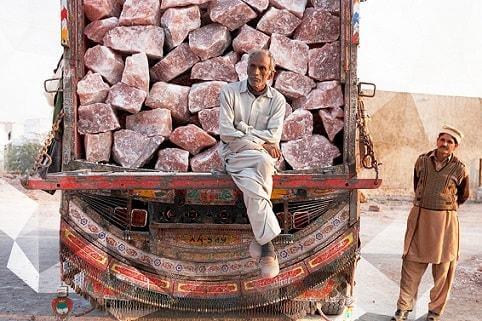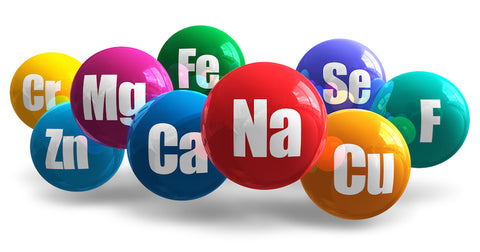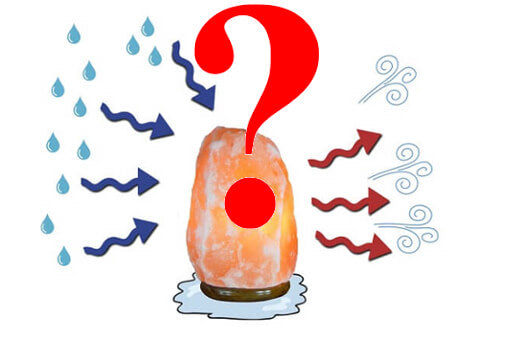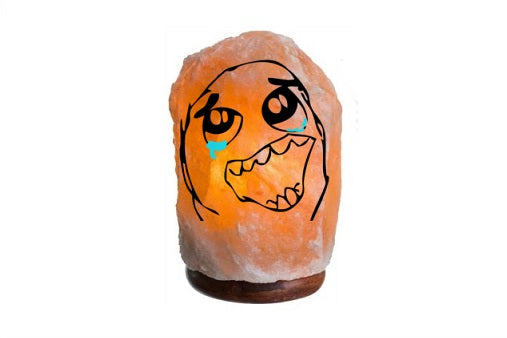
Where does it come from?
Sitting here in Australia, when you hear the word Himalayan salt you immediately think of the Himalayan mountains, this is not entirely true though. Himalayan pink salt actually comes from just south of the western end of the Himalayan mountain range in the northern regions of Pakistan. The story goes that in the year 326 BC when Alexander the Great was taking his armies across this region to conquer India, he set up camp in the region. His soldiers noticed their horses were licking the rock on the ground and that's how the Salt was discovered.

Today, this same place is known as the Khewra salt mines and is the second largest salt mine in the world. This is the only place in the world that pink himalayan salt can be found, whether it's for lamps, for eating, or for anything else. It is believed that the mines were formed nearly 800 million years ago when a shallow sea evaporated creating a 300km long salt range. This salt is considered as the purest and healthiest form of salt in the world today.
Here in the foothills of the Himalayas, the miners manually mine salt from the ancient caverns running up to half a mile deep and covering thousands of square kilometres. Sadly, they are only paid $3 per tonne of rock salt mined, on a good day. Part of our commitment at the Salt Lamp Shop is to return some of the profit from each lamp back into improving the lives and livelihood of these abused labourers and their children.
We source the highest quality salt, use superior crafting techniques and the best components to create our signature natural shaped salt lamps which are unlike any other out there today. Through multiple steps of quality control and checking, we are proud to deliver the best quality salt lamps to homes nation wide.
All of this work supports the poor and needy in earning a livelihood, we pay wages well above the industry standard in the area, this is a part of our commitment to ethical and sustainable sourcing of Himalayan salt. Read more about the exploitation in this eye opening article.
https://www.seattletimes.com/nation-world/pakistan-salt-mined-old-fashioned-way/
Why is Himalayan salt pink?
The salt from the Khewra mines is pinkish in colour because it contains trace amounts of iron oxide, which is a fancy name for rust! However it is not dangerous at all to eat or to be around. In-fact there are 84 trace minerals in Himalayan salt and they're the reason for it's beautiful appearance and it's exceptional health benefits. Our bodies naturally needs both trace minerals as well as macro-minerals and our modern diets are often missing these elements.
Macro-minerals contained in Himalayan salt:
- calcium chloride
- iron
- magnesium
- phosphorus
- potassium and sodium.
Trace minerals:
- boron
- chromium
- copper
- fluoride
- iodine
- manganese
- molybdenum
- selenium
- zinc
- aluminum
- carbon
- platinum
- selenium
- sulfur and titanium.

However not all salt is the same. Only A+ Grade Himalayan salt is safe to consumed. This is the purest form of Himalayan salt that is extracted from the mines and contains no regular stone or dirt impurities.
Top salt makes top lamps.
Before you continue reading, have a look at our salt lamps to see all the lamps we have on sale now. We produce our lamps from the best Himalayan salt.
When it comes to your lamp, depending on where the Himalayan salt was mined from it will have a unique structure. Salt veins of pure salt run through the crystal giving it a unique fingerprint and aesthetic look.The rustic look adds to the natural ambience of the lamp. The amount of iron oxide content will determine how reddish your lamp is. However we only use quality salt in producing our lamps, no cracks or rock impurities are allowed and the salt chosen on a perfect warm pink colour.
So with all that said, we hope you were sufficiently enlightened about exactly what Himalayan salt is and where it comes from.
Photo Credit to Naturalsalthealing








